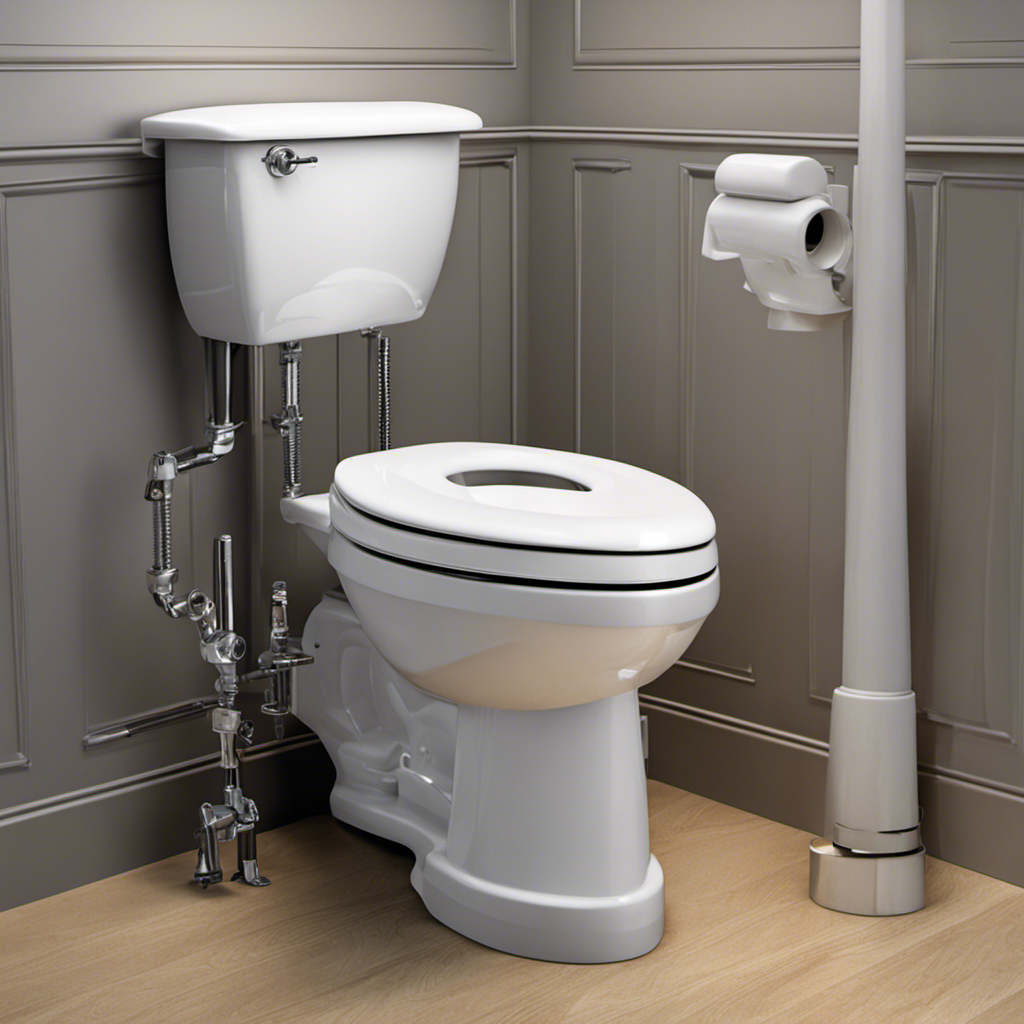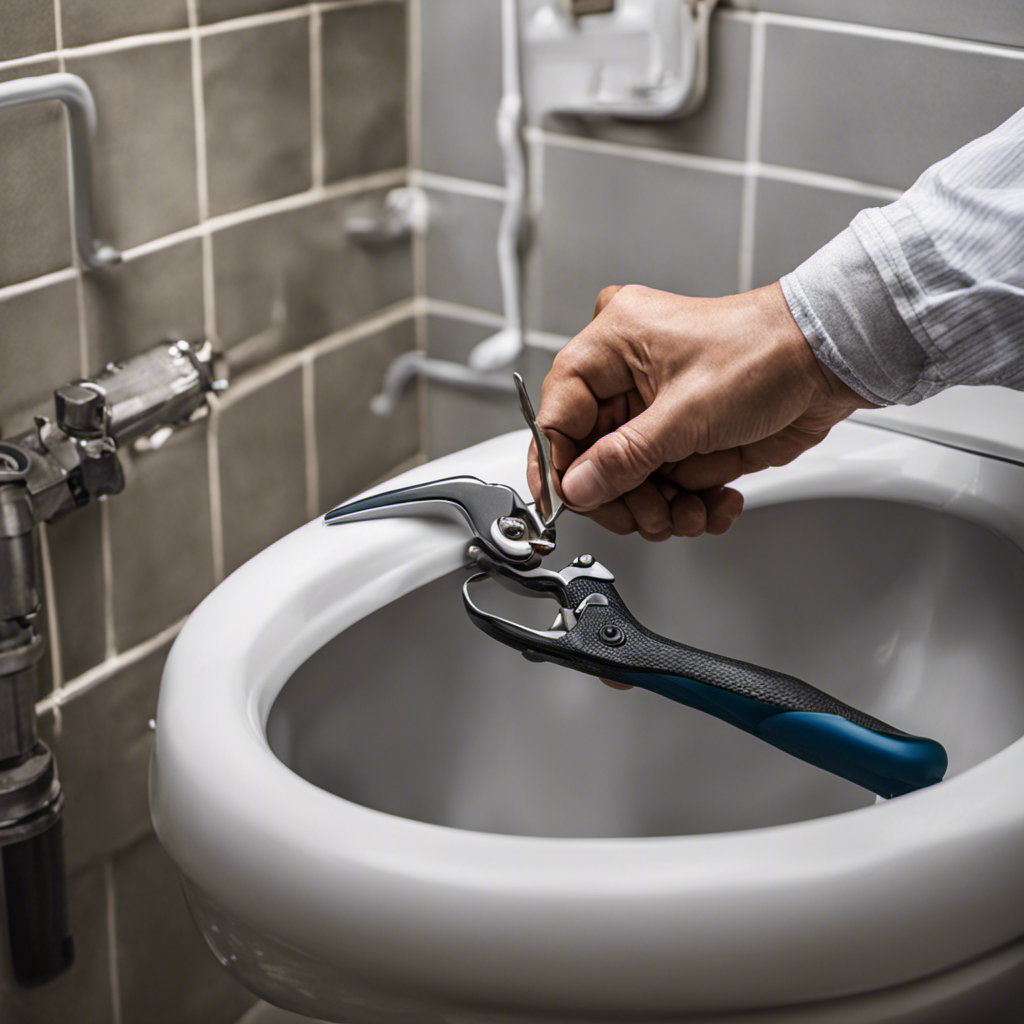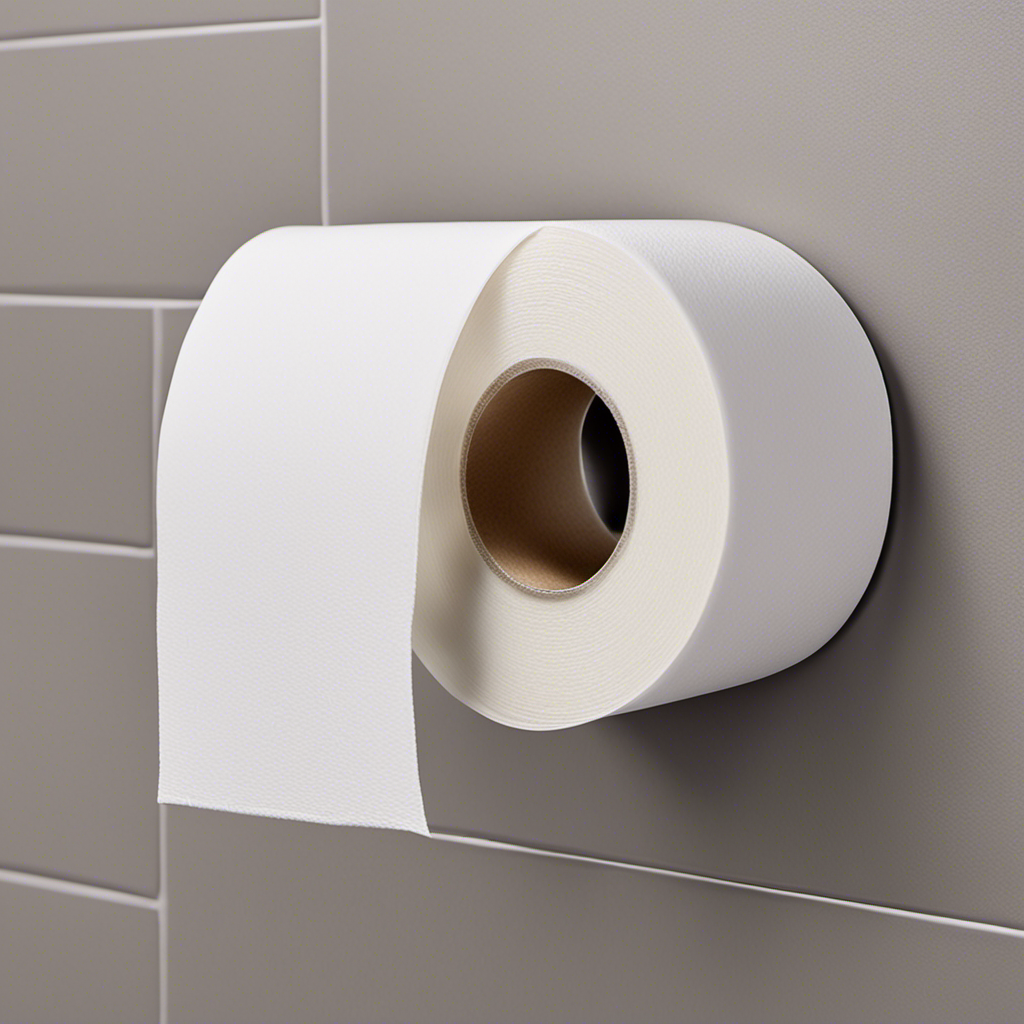Did you know that improperly tightened toilet bolts can lead to leaks and wobbly toilets? In this article, I’ll guide you through the importance of properly tightening toilet bolts and how to avoid common mistakes.
We’ll explore the right amount of tightness, along with the tools and techniques you’ll need to ensure stability and longevity.
Additionally, I’ll share tips on how to fix over-tightened or under-tightened bolts.
Let’s dive in and make sure your toilet stays securely in place!
Key Takeaways
- Properly tightened toilet bolts are crucial for stability, functionality, and preventing leaks and damage.
- Over-tightening can lead to cracked toilet bowls or damaged flanges, while under-tightening can result in leaks and instability.
- Striking a balance between too loose and too tight is important, gradually tightening the bolts until they are snug and giving them a final quarter-turn for stability.
- Regularly inspecting and maintaining the proper tightness of toilet bolts ensures the longevity, stability, and cost-effectiveness of the toilet.
Understanding the Importance of Properly Tightened Toilet Bolts
You need to understand the importance of properly tightened toilet bolts.
Proper bolt installation is essential for the stability and functionality of your toilet. When toilet bolts are not tightened correctly, it can lead to a range of issues and consequences.
Firstly, a loose toilet can cause leaks, which can damage your floor and lead to costly repairs. Additionally, loose bolts can result in an unstable toilet, making it wobble or shift when you sit on it. This not only creates an uncomfortable experience but also poses a safety hazard.
Loose bolts can also cause the wax seal to break, leading to unpleasant odors and potential water damage.
Therefore, it is crucial to ensure that your toilet bolts are properly tightened to avoid these unwanted consequences.
Common Mistakes to Avoid When Tightening Toilet Bolts
When it comes to tightening toilet bolts, it’s crucial to find the proper level of tightness. Over-tightening can lead to cracked toilet bowls or damaged flanges, while under-tightening can result in leaks and instability.
In this discussion, I will delve into the importance of proper bolt tightness and provide tips on how to avoid the common mistake of overtightening bolts.
Proper Bolt Tightness
To ensure proper bolt tightness, it’s important to use a wrench or pliers to tighten the bolts securely. Proper bolt maintenance is crucial for the longevity and stability of your toilet. Over time, bolts can loosen due to regular use or shifting of the toilet.
It is recommended to check the tightness of the toilet bolts at least once a year. However, if you notice any wobbling or movement in your toilet, it is advisable to check the bolts immediately. When tightening the bolts, be cautious not to overtighten as it can damage the toilet or the flange.
Tighten the bolts until they are snug, ensuring that the toilet is securely fastened to the floor. Regularly checking and tightening the bolts will help prevent leaks and potential damage to your toilet.
Avoid Overtightening Bolts
It’s crucial to be cautious not to overtighten bolts, as this can lead to damage. When it comes to toilet bolts, finding the right balance is key. You want the bolts to be tight enough to prevent leaks, but overtightening can cause cracks in the toilet base or even break the bolts. To avoid damage, follow the manufacturer’s instructions for proper tightness. They often recommend using a wrench to tighten the bolts until they are snug, but not overly tight. This ensures a secure connection without risking any harm to the toilet or its components. Remember, it’s better to err on the side of caution and avoid overtightening than to risk costly repairs down the line.
| Avoiding Damage | Finding the Right Balance |
|---|---|
| Follow instructions | Snug, not overly tight |
| Prevent leaks | Secure connection |
| No cracks or breaks | Caution is key |
Determining the Right Amount of Tightness for Toilet Bolts
Make sure you’re using the right amount of tightness for your toilet bolts. Determining the right amount of tension is crucial to avoid bolt slippage and ensure a secure toilet installation.
When tightening the bolts, it’s important to strike a balance between too loose and too tight. Over-tightening can lead to bolt breakage or damage to the toilet base, while under-tightening can result in wobbling or leaking.
To determine the right amount of tension, use a wrench or adjustable pliers to gradually tighten the bolts until they are snug. Avoid using excessive force, as this can cause damage. Once snug, give the bolts a final quarter-turn to ensure stability.
Tools and Techniques for Tightening Toilet Bolts
When it comes to tightening toilet bolts, there are a few key points to keep in mind.
First and foremost, achieving optimal bolt tightness is crucial to ensure a secure and leak-free connection.
However, it is equally important to avoid over-tightening, as this can lead to damage or even breakage of the toilet base.
Lastly, using the proper technique and following manufacturer’s guidelines is essential for a successful and long-lasting installation.
Optimal Bolt Tightness
You’ll want to tighten the toilet bolts to the optimal level for secure installation. Achieving the right bolt tightness is crucial in preventing leaks and ensuring the stability of your toilet. To help you understand the optimal tightness, let me present a table that outlines the recommended torque specifications for toilet bolts:
| Bolt Type | Torque Specification |
|---|---|
| Brass | 80-100 inch-pounds |
| Stainless Steel | 100-120 inch-pounds |
| Nylon | 60-80 inch-pounds |
Avoiding Over-Tightening
To prevent damage, it’s important not to overtighten the bolts securing your toilet. While it’s crucial to ensure the bolts are adequately tightened, avoiding excessive force is equally important. Finding the right balance will help maintain the integrity of the toilet and prevent any potential problems down the line.
Here are some tips to keep in mind:
- Use a wrench to tighten the bolts, but be cautious not to apply too much pressure.
- Stop tightening when you feel resistance, as overtightening can cause cracks or even break the toilet base.
- Remember to check for any leaks after tightening the bolts to ensure a proper seal.
Importance of Proper Technique
Using the correct technique is crucial for maintaining the integrity of your toilet and preventing any potential damage.
When it comes to tightening toilet bolts, it’s important to avoid common mistakes that could lead to problems down the line.
One of the most common mistakes people make is over-tightening the bolts. This can cause the porcelain to crack or break, leading to leaks and costly repairs.
To avoid this, it’s important to use the proper technique. Start by hand-tightening the bolts until they are snug. Then, using a wrench, give each bolt a quarter turn to ensure they are secure. Be careful not to overtighten, as this can cause damage.
Following these steps will help maintain the integrity of your toilet and prevent any potential issues.
Signs of Over-Tightened Toilet Bolts and How to Fix Them
If toilet bolts are overly tightened, they may cause cracks or leaks in the toilet bowl. To prevent such issues, it is essential to know how to fix loose toilet bolts and prevent toilet wobbling. Here are some key points to consider:
- Use the right tools: A wrench specifically designed for toilet bolts will help you tighten them to the correct level.
- Follow the manufacturer’s guidelines: Each toilet may have different specifications, so it’s important to refer to the instructions provided.
- Use the right amount of force: Tighten the bolts firmly, but avoid excessive force that could lead to damage.
By following these steps, you can ensure that your toilet bolts are tightened properly, preventing any potential issues.
Now, let’s move on to the next section where we will discuss the signs of under-tightened toilet bolts and how to fix them.
Signs of Under-Tightened Toilet Bolts and How to Fix Them
After discussing the signs and fixes for over-tightened toilet bolts, let’s now focus on the signs of under-tightened toilet bolts and how to fix them.
When toilet bolts are not tightened enough, they can lead to wobbling and instability, causing potential leaks and damage over time. One common sign of loose bolts is a toilet that shifts or rocks when you sit on it.
To fix this issue, you will need to tighten the bolts using an adjustable wrench or pliers. Start by gently turning the bolts clockwise until they are snug, but be careful not to over-tighten them. It’s important to ensure that the toilet is level and stable before you finish.
By fixing loose toilet bolts promptly, you can prevent further wobbling and potential damage to your bathroom floor.
Now that we have covered fixing loose toilet bolts, let’s move on to maintaining proper tightness for longevity and stability.
Maintaining Proper Tightness of Toilet Bolts for Longevity and Stability
To ensure the longevity and stability of your toilet, you’ll want to periodically check and adjust the tightness of the bolts. Proper toilet bolt maintenance is essential in preventing toilet wobbling and potential damage. Here are some key steps to follow:
-
Regular Inspection: Take the time to inspect your toilet bolts at least once a year. Look for any signs of loosening or corrosion.
-
Tighten Bolts: If you notice any wobbling or movement, it’s time to tighten the bolts. Use a wrench to gently tighten them, but be careful not to overtighten, as this can cause damage.
-
Use Washers: Make sure to use washers between the bolts and the toilet base. This helps distribute the pressure evenly and reduces the risk of cracking.
Conclusion
In conclusion, it’s essential to understand the importance of properly tightening toilet bolts. As the saying goes, "tight, but not too tight." Over-tightening can cause damage, while under-tightening can lead to leaks and instability.
By using the right tools and techniques, you can achieve the perfect balance. Regular maintenance is also crucial to ensure the longevity and stability of your toilet bolts.
Remember, a little effort now can save you from a big mess later. So, tighten those bolts just right and enjoy a worry-free bathroom experience.










